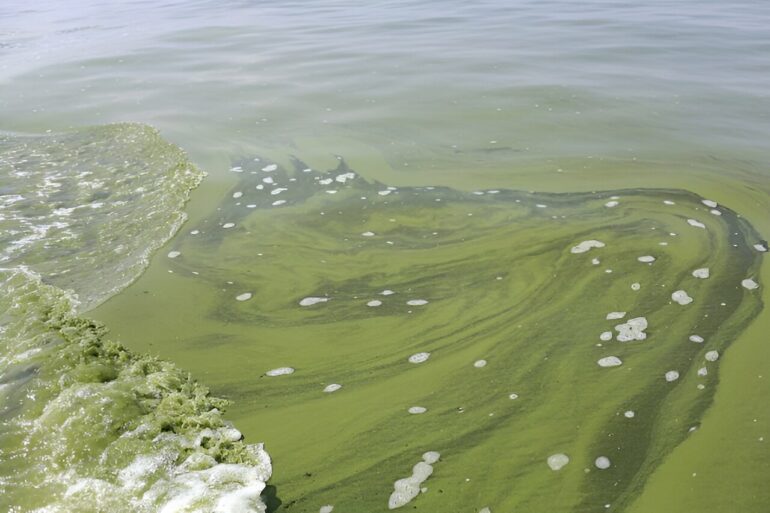Climate change is causing a series of maladies by warming land and sea. A study published online in Limnology and Oceanography Letters demonstrates that one consequence of climate change that has already occurred is the spread and intensification of toxic algae blooms in Lake Erie.
A team of scientists led by Christopher Gobler, Ph.D., a Professor in the School of Marine and Atmospheric Sciences (SoMAS) at Stony Brook University, used high resolution satellite-based temperature data along with the growth response of the blue-green algae that plagues Lake Erie—Microcystis.
Their study demonstrates that since the 1990s, the western basin of Lake Erie has warmed and become significantly more hospitable to this alga and that ‘blooms’ of Microcystis have become more intense in these same regions. Microcystis can cause serious health concerns as the gastrointestinal toxin, microcystin, can be harmful to humans and animals.
“Toxic or harmful algal blooms are not a new phenomenon,” says Gobler. “These events can sicken humans by contaminating drinking water or harm aquatic life as toxins cycle through food webs.”
And the problem is worsening. “The intensity of these events has increased across the globe and this study has demonstrated that warming since the 20th century has expanded the bloom season of Microcystis in the western basin of Lake Erie by a month,” notes Gobler.
While several studies have predicted that toxic algae blooms may become more common in the future, this is one of the first studies to link the recent intensification of Microcystis blooms in a specific ecosystem to decadal warming. Confidence in the findings of the study came from the match of the modeled findings to the intensification of these events in western Lake Erie during this century.
“It was remarkable and reassuring to see our hindcast models fall in-line with observations in Lake Erie over the past 30 years,” said co-author, Benjamin Kramer, Ph.D., who received his doctorate at Stony Brook University and is now a post-doctoral scholar at the University of Minnesota.
“It gives us confidence that these model parameters and our approach can be applied to hindcasting and even forecasting of these events elsewhere.”
The study brought together biologists with climate scientists who made use of ecosystem observations, laboratory experiments, and thirty years of satellite-based temperature estimates that are made daily and with a very high degree of spatial resolution.
“Today, collaborating with scientists outside of your discipline is almost a requirement to solve the tough questions,” said climate modeler, and co-author, Owen Doherty, Ph.D. “This study showed the value of interdisciplinary collaboration through a novel combination of laboratory, observational, and modeling work.”
And the study has important consequences for policy and the future of the oceans.
“This study demonstrates that the warming that has already occurred is now impacting human health and our water resources,” said Gobler.
“An important implication of the study is that carbon emission and climate change-related policy decisions made today are likely to have important consequences for the spreading and intensification of toxic algal blooms in large lake ecosystems.”
More information:
Christopher J. Gobler et al, Decadal warming has intensified Microcystis‐dominated cyanobacterial blooms in Lake Erie, Limnology and Oceanography Letters (2024). DOI: 10.1002/lol2.10406
Provided by
Stony Brook University
Citation:
Climate change has made toxic algal blooms in Lake Erie more intense, scientists show (2024, June 11)



